Mobility Update, 2025-05
Cycling
The Network
Related to our previous coverage of the expanding north-end bicycle network, progress has been made related to the River East Trail.

Downtown Grand Rapids Inc (DGRI) has acquired the property at 1615 Monroe Ave MW, immediately north of the Grand Rapids Eastern railroad, which will allow the proposed trail to connect from Monroe, back to the rivers edge, as at this time it cannot cross the railroad tracks. The trail - from the south - will swing out to the street and then back to the river's edge to continue behind the old Baker Furniture factory (1651 & 1661 Monroe Ave NW) to Ann St. Upon completion this trail will link the riverside trail in Canal Park / Monroe North to the southern terminus of the White Pine Trail at Ann St.
Work on the trail is expected to begin this year (2025) and be completed in 2026; so far this project has not been impacted by the collapse of the nation's federal government.
It will be up to future projects to solve the crossings of Leonard St, Ann St, as well as the railroad.
Additionally, improved cycling infrastructure expected in the 2025 on Division Ave, Ann St, And Boston St.
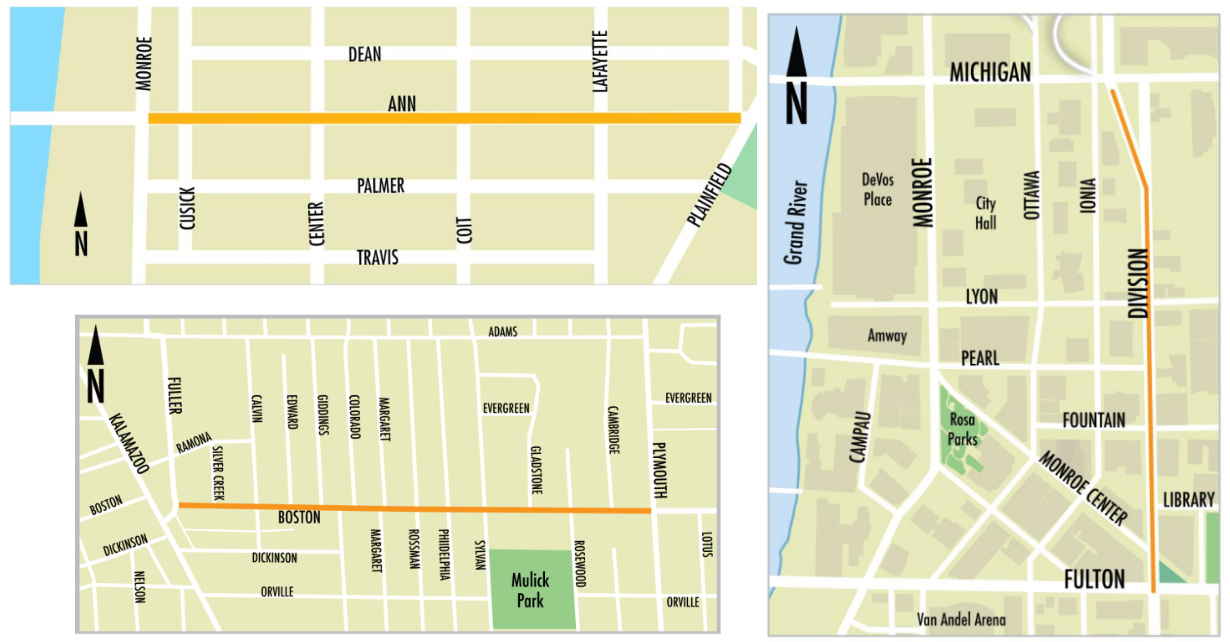
And there is more to come in 2026 when, at least according to the proposed project list in the next city budget, our scattered collection of bike lanes and bike paths will begin to cohere into a network. We have come a long way.
The current list of bicycle projects is:
| Type | Right-of-Way | Limits | Schedule |
|---|---|---|---|
| Seperated | 1st & 2nd St NW | Garfield Ave NW / Turner Ave NW | ~2028? |
| Seperated | 6th St NW | Front Ave NW / Broadway Ave NW | 2025 - 2026 |
| Bikeway | 11th St NW | Front Ave NW / Broadway Ave NW | ? |
| Bikeway | Alexandar St SE & Delaware St SE/SW | City Limits / MLK St, Ionia Ave SW | ? |
| Bikeway | Alten Ave NE | Michigan St NE / Fulton St E | 2026? |
| Seperated | Ann St NW | Monroe Ave NW / Turner Ave NW | 2026? |
| Bikeway | Blaine Ave SE | Griggs St SE / Alger St SE | n/a |
| Bikeway | Caledonia St, Spencer St, Sweet St | Monroe Ave NW / Ball Ave NE | 2027? |
| Seperated | Century Ave SW | Sheridan Ave SW / Burton St SW | ? |
| Bikeway | Garfield Ave NW | 2nd St NW / Walker Ave NW | 2025 |
| Bikeway | Garfield Park neighborhood / Alger Heights neighborhood | Buchanan Ave SW / Alger St SE | ? |
| Lane | Hall St SE | Division Ave S / Madison Ave SE | ? |
| Lane | Lake Dr SE | Carlton Ave SE / Atlas St SE | ? |
| Lane | Madison Ave SE | Adams St SE / Hall St SE | ? |
| Bikeway | Myrtle St & Webster St NW | Garfield Ave NW / Turner Ave NW | ? |
| Bikeway | Northeast Neighborhoods (?) | Plainfield Ave / Plymouth Ave | ? |
| Bikeway | Sherman St SE & Buckley St SW | City limits / Ionia Ave SW | ? |
| Bikeway | Turner Ave & Mount Vernon Ave NW | 4th St NW / Fulton St W | ~2026 ? |
Additional improvements may be made, opportunistically, mostly via Vital Streets, as other projects are performed.
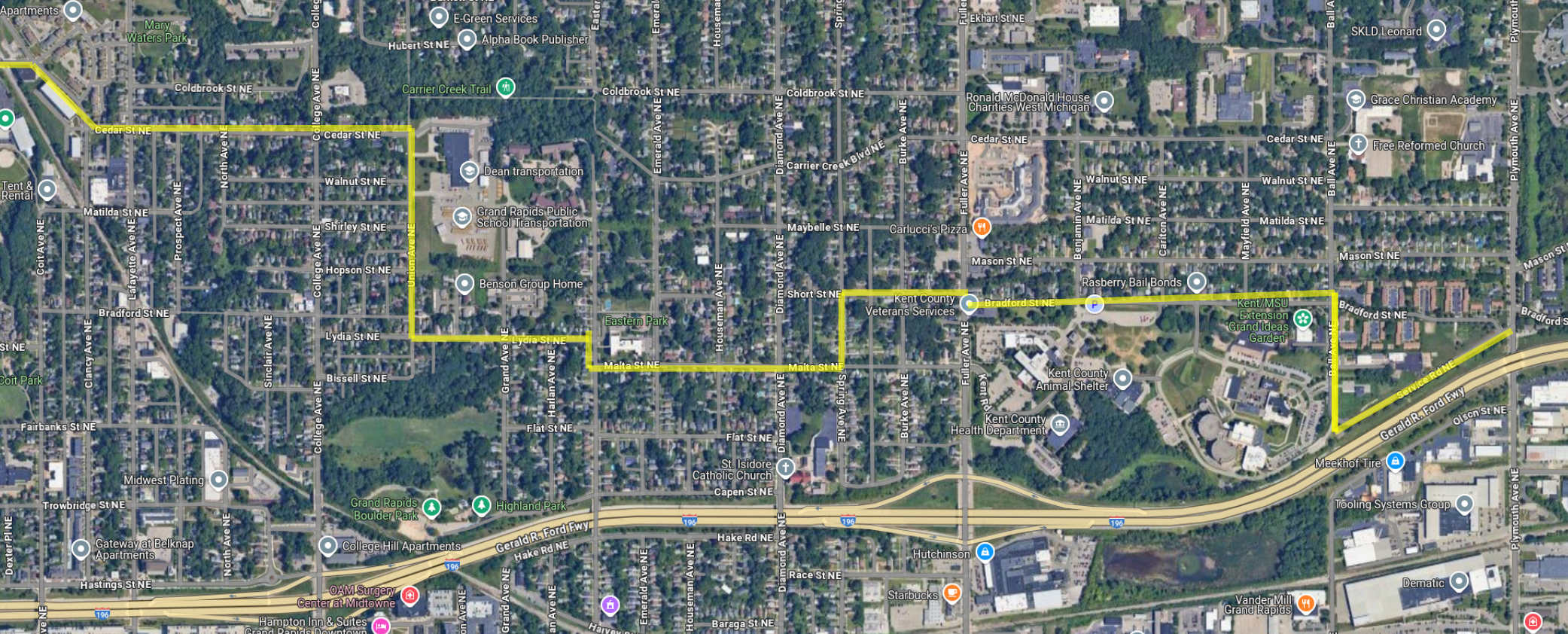
The routing of this bikeway feels like a call-out to our post from 2021 The Broken Sloping Grid. Today, usage of the Carrier Creek trail would provide the user a much better, and safer, experience. Lydia St is a perilous grade with no traffic calming measures. The Carrier Creek trail also keeps users closer to Leonard St, where there are things to go to. Much of this proposed routing seems to avoid useful destinations.
As this is my backyard, at least according to the NIMBYs, I can't help but draw a far preferable, IMO, solution to solving the broken-slopping grid.
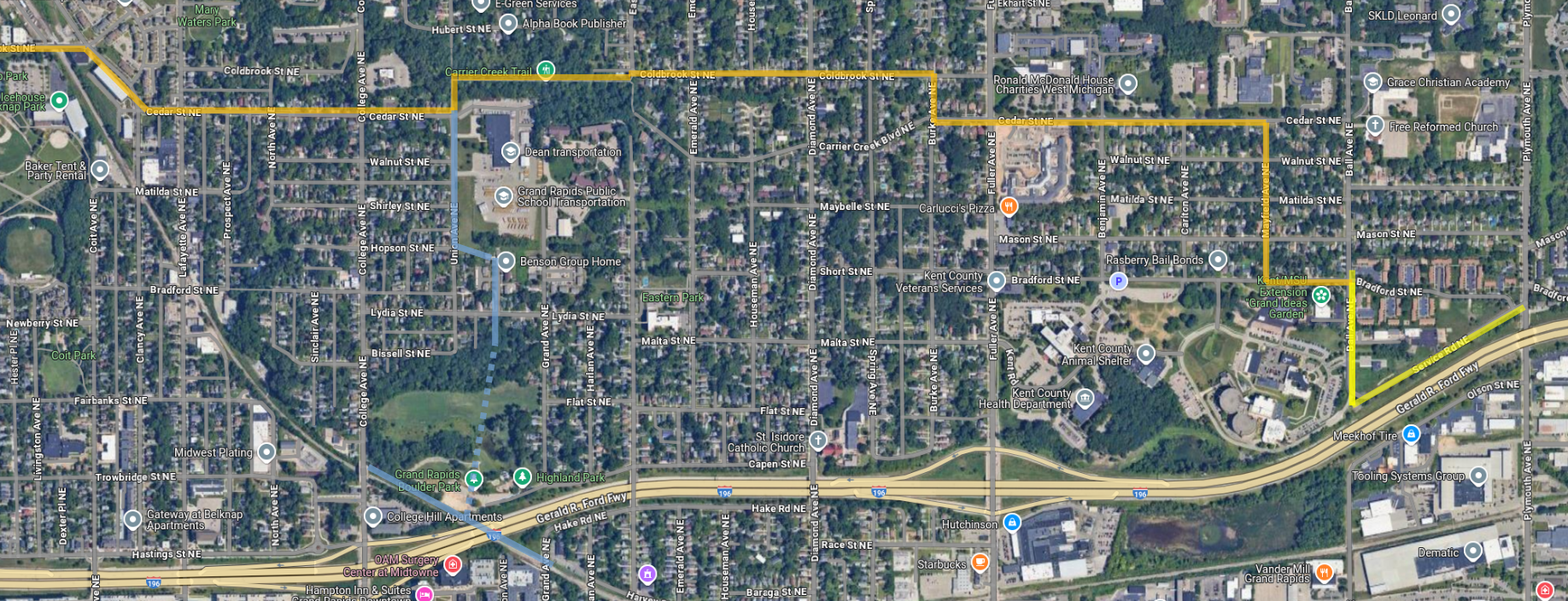
Likely this is a more expensive solution, OTOH, 99.44% of this already exists in an unofficial capacity.
Vulnerable Road User Legislation
The League of Michigan Bicyclists is once again making a run at getting vulnerable road user legislation through. This has been an ongoing effort since ~2023.
This time it is Senate Bills 216 and 217; and House Bills 4334 and 4335. If passed these bills would increase the penalties for Motorists who run down pedestrians and cyclists. These bills were introduced by senator Sean McCann (D-Kalamazoo), senator Thomas Albert (R-Lowell), representative Julie M. Rogers (D-Kalamazoo), and representative Pauline Wendzel (R-Watervliet). Hat tip to anyone attempting to add some accountability for Motorists into our transportation system.
Motorists struck 10% more pedestrians and bicyclists in 2023 than in 2022. There were 114 accidents involving pedestrians resulting in 183 deaths; 1,480 accidents involving bicyclists, resulting in 24 deaths.
The Rapid
Safety
The Rapid has filed their updated safety plan with the Federal Transit Administration (FTA). This filing includes safety reporting of the last four years (2021 - 2024).

Comparing the current motor vehicle fatality rate of 0.134 per 100,000 vehicle miles to the Rapid's four year average of 0.006 fatalities per 100,000 vehicle miles reveals the stark truth that the Rapid is 22 TIMES safer than riding in the average motor vehicle. Additionally the Rapids' safety is improving over time as the injury and fatality rate of motorists is increasing
How likely are you to die in a car vs. on a Rapid bus?
🚗 ⚰️⚰️⚰️⚰️⚰️⚰️⚰️⚰️⚰️⚰️⚰️⚰️⚰️⚰️⚰️⚰️⚰️⚰️⚰️⚰️⚰️⚰️
🚍 ⚰️
Godwin Mercado
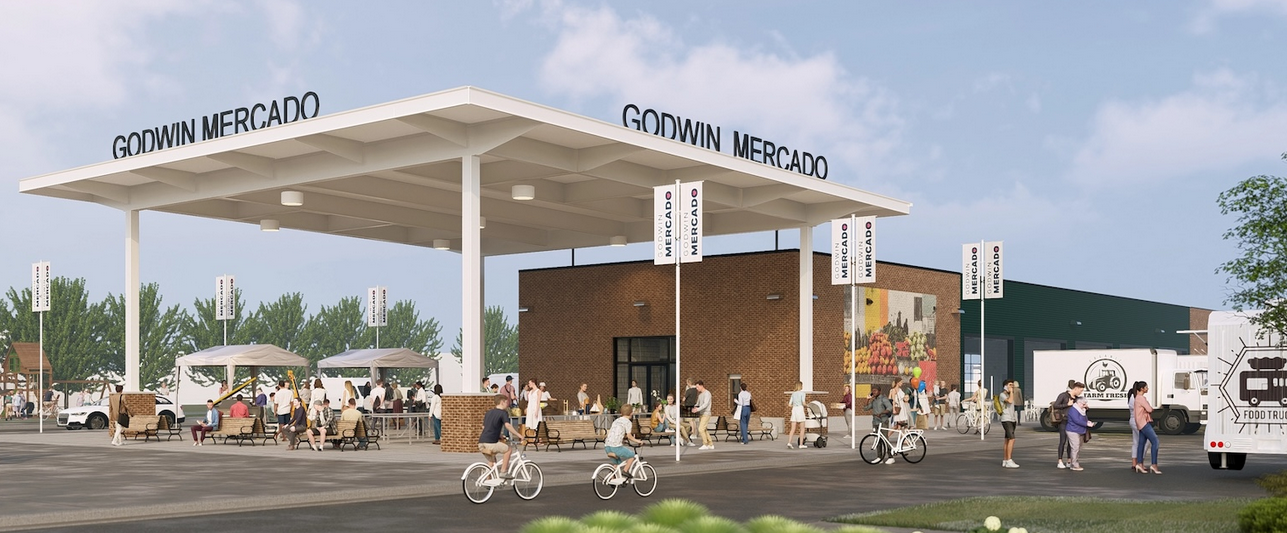
Located at 301 36th St SW, Wyoming's new market pavilion is less than two blocks from both the Rapid #1 and the 36th St Silverline station (Rapid #90). The Godwin Mercado will be open all year as an event venue and hosting farmers markets. The market is expected to open to the public in spring of 2026.

Route#1000
For years people have been asking for public transit access to the chief amenities outside of the city: Aman Park, Meijer Gardens, Millennium Park, the beach, etc... And here is eponymously named Route#1000, providing access to Millennium Park.
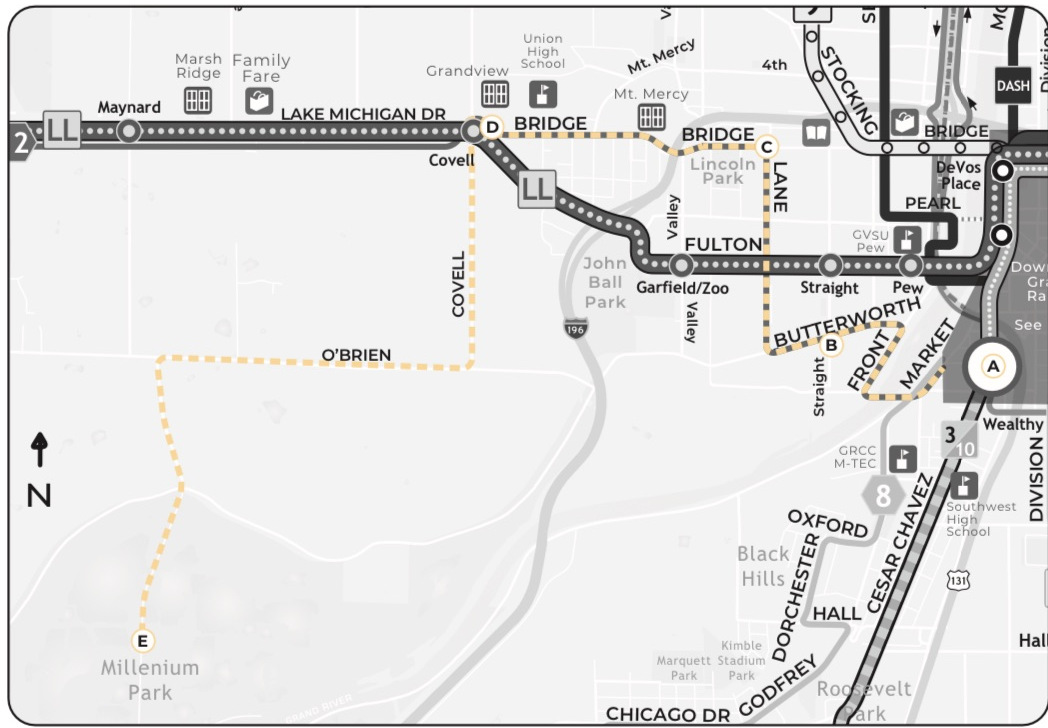
On Saturday Route#1000 will provide thirty (30) minute headways from Central Station, via the Westside, to the Van Andel Beach House (1415 Maynard Ave. SW). The service will operate hourly on Sundays. The service will operate 11:00am - 7:00pm. Through the city the route follows the route of the existing Rapid#12 (Westside) until Covell Ave, at which point it turns south from Bridge St.
The service began May 10th, however it is not yet listed on the schedules & maps page.
The ridership of this service will be telling; if the requests for this type of amenity access is a case of aspirational demand [I would use transit if ____, but not really] or a demonstrable demand. This is a particular challenge in all types of planning: if you ask people what they want, they will often answer by telling you what they have. In this case they have access to those locations via driving. Is the ability to use a different solution to solve the same problem something people actually want? When public transportation is planned as a replacement-of-driving it often does not result in strong utilization. We will look at the ridership of the DASH below, the DASH has a clear goal of providing convenient access to frequently used services and destinations, it is not primarily concerned with being a driving replacement, and it is undebatably successful. What will route #1000 reveal?
Funding
The State
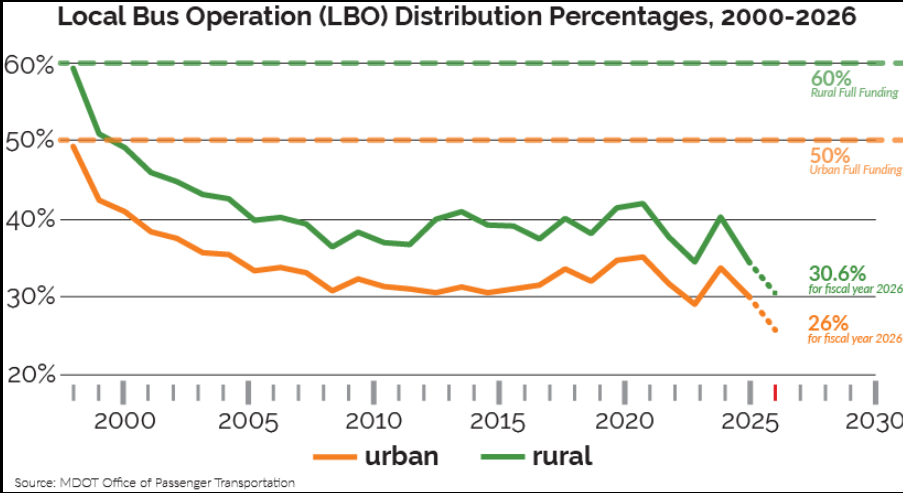
In last year's October update we discussed the fiscal crisis facing Michigan's public transportation operators and the potential solution via reform of the billion dollar SOAR [Whitmer's "economic development" slush] fund, ... well, that went down in the flames of the shamelessly ineffective first Democratic Trifecta in 40 years. Today what seems most likely is the Michigan Democratic party once again abandoning its core constituency: the state's urban areas [without which would they have a single seat? 🤔]. Continuation of the status-quo, of course, means another year of reasonable cuts to state operating support. Michigan Democrats can always play the "well, it could be worse" card; as that's what leadership sounds like in this state.
Local
Locally we are steaming towards the end of the Rapid's funding; the 1.47 mill property tax which is the local funding for the Rapid sunsets in 2029. Given that the state of Michigan only allows transit authorities to place exactly one and only one question on the ballot each year that means 2026, 2027, 2028, and 2029 are the only four opportunities for the continued existence of The Rapid. And the local transit senate (aka: the board of the Rapid) seems paralyzed. This could be an opportunity, but where is the enthusiasm? Where is the ambition? Recently Ann Arbor voters increased their support for transit by more than the total support the Rapid receives today. Will Grand Rapid voters be given that opportunity? The Rapid, as an institution, is struggling with what is best described as "learned helplessness". It is an institution which has been without friends for too long.
Grand Action talks a big game about multi-modal transportation for its venues [amphitheater, stadium, etc...], just as it makes no accommodations for public transportation in its plans, or really any accommodations for access at all. The Rapid is not at the table for those designs, nor is there any funding directly provided to public transportation by these public amenities. This does not prevent Grand Action from slapping The Rapid's logo on all of their marketing.
We can go all the way back to the Silver Line, Michigan's first BRT (Bus Rapid Transit) line which began operation in 2014, after at least two years of planning. The Silverline, a $45,000,000 investment, was accompanied by a land-use plan in order to capitalize on that investment, right? Right? No, it was not. The city of Grand Rapids developed the South Division Corridor Plan in 2019 - seven years later - after "exploring lack of Silver Line development". Seven years. That was urban planning malpractice, it was the squandering of both opportunity and public funds. Who is responsible for that? It is not the Rapid, the Rapid has no urban planning authority. That failure to have a plan is entirely on the [then] mayor (Rosalynn Bliss) and the city commissioners of the 2010s. A cadre of people who we know from watching the unfolding housing crisis had little interest in land-use, an essential aspect of running a city. Imagine asking a friend to help with an urgent matter, and then having that friend return your phone call seven years later.
All of that rests atop the constant whining by entitled employers about the lack of public transportation for their low-wage workers after those employers choose to build facilities where, yes, there is no public transportation. However, once those facilities are built, access is The Rapid's problem to solve? Are those employers putting money on the table given their poor choice of location? Of course not, it is merely unfortunate for those employees, and then those employees are encouraged to be frustrated with The Rapid. Why can't The Rapid do a better job?
Don't fall for this: the throwing of public institutions, overseen by elected officials, under the bus for failures. This is a failure of the people elected. This is the pettiest kind of class warfare; turning people against the institutions necessary for their own success. In the words of Jarrett Walker "Hating your transit agency won’t make it better". Frustration belongs at the feet of the elected leaders of The Six Cities (East Grand Rapids, Grand Rapids, Grandville, Kentwood, Walker, and Wyoming) who have seats on The Rapid's board. Also the employers who make convenient-for-themselves location choices. Creating an unworkable situation, then blaming someone else [The Rapid] for not solving it, is not a song we need to sing along to.
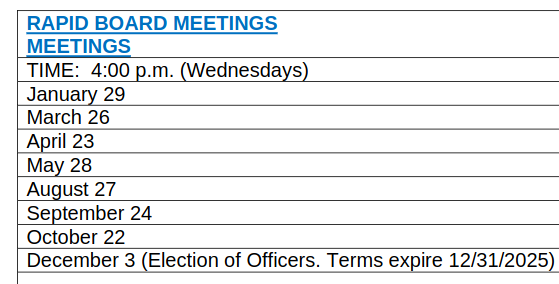 |
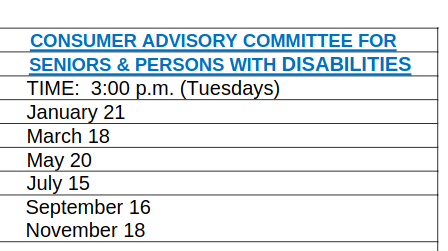 |
The Rapid's leadership needs to be encouraged to try. A great city needs a great public transportation service, and I hear constantly how Grand Rapids aspires to be a great city. Convincing them to try is up to us. Yes, organizing takes time and effort, there are other things anyone of us could be doing. If at all possible consider sending a message to the Rapid's board expressing your support - or even consider showing up for public comment at one of their meetings. Work with Strongtowns Grand Rapids in helping us organize support for the The Rapid. They really need a big hug.
The DASH
Renewal of the The DASH support in the city's FY2026 budget was treated as a given. This is in due in large part to incredibly high ridership growth.
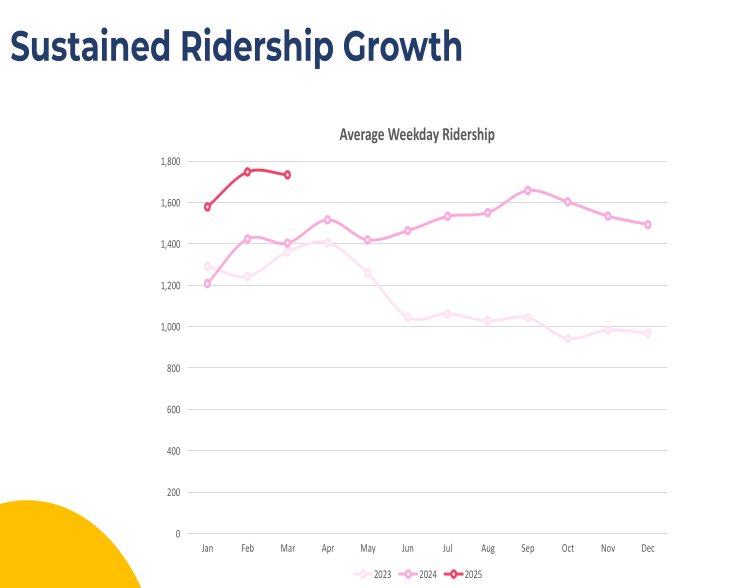 |
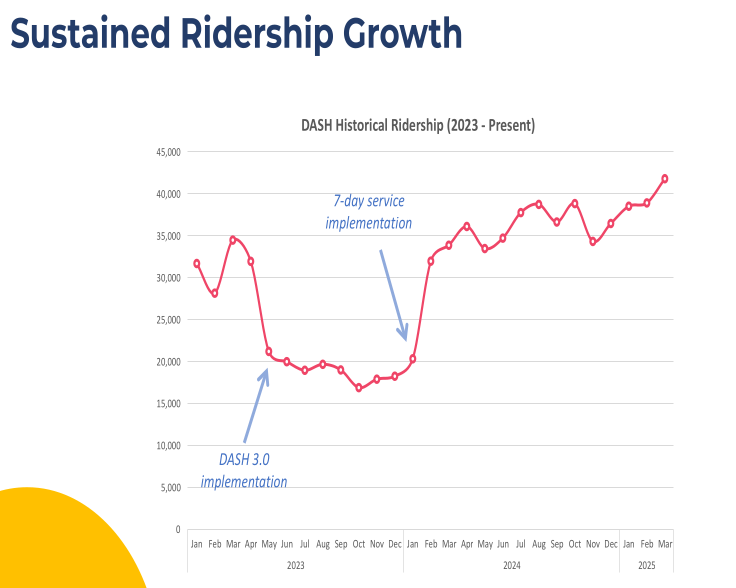 |
The highest usage DASH stop is the stop at Rapid Central Station - with 11.5% of activity - indicating the DASH is being used in conjunction with other transit services. The second and third highest use stops are the Main Library and Bridge Street Market, respectively.
The last diesel bus will be retired in June of 2025. At that point the entire fleet will be powered by renewable Natural Gas, much of it produced by the city's biodigester. An internal combustion engine running on CNG rather than diesel produces 97% less particulate pollution and 58% NOx (the compounds which react to sunlight to produce "smog").
Las Canchas Farmers Market
This summer Downtown Grand Rapids Inc is launching the Farmers Market at Las Canchas (250 Seward Ave). The farmers maker will operate from 9:00am to 2:00pm on June 9th, July 14th, August 11th, September 9th, and October 13th. The market will be hosting the following vendors: Better Place Farm, Last Mile Café, Just Enjoy Bakery, Rethink Nutrition, Field and Fire, Mosby's Popcorn, MI Candyland, The Cheese People of Grand Rapids, Madre Masa, Moore Garden and Farm, Let's Stay Home Cocktails, Mycophil's Garden, RefuTea, Old World Olive Company, Los Pinches Tacos, and Taste of Toya’s World.
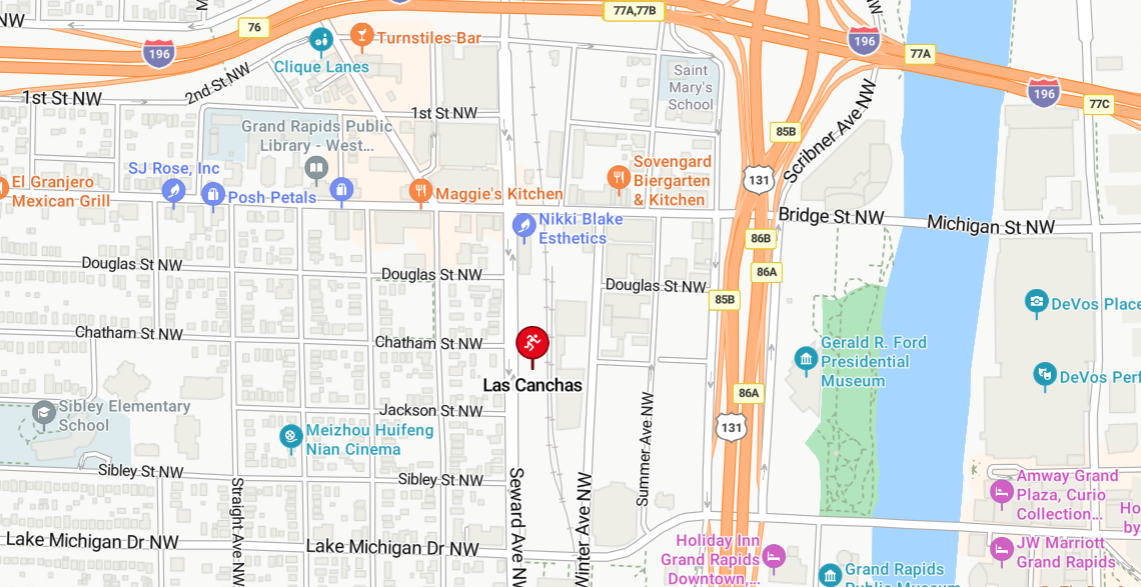
Car Share

The car share service - MDO - which launched in October of 2024 has exceeded projected utilization. Some of the locations have exceeded eleven (11) hours of utilization per day. The number of active users, at ninety seven (97), is slightly below expectation, but this number is steadily increasing.
The initial cars in the fleet had both an hourly ($5) rate and a daily ($50) rate. Cars added to the fleet to meet demand may not have the daily rate available in order to ensure availability for hourly users. The current usage is almost evenly split between hourly reservations and daily reservations.
The three year contract with MDO was for $500,000. Given the high utilization the revenue is expected to exceed $400,000 in that period; this is ~$50,000 more than expected. This higher than expected revenue will offset the loss of $30,000 expected from the US Department of Energy due to the collapse of the nation's federal government. Ultimately the anticipated cost of the program to the city is expected to be around $100,000/yr, a subsidy of 30%, with revenues covering 70% of the cost. The intention is to expand the program to fifteen (15) vehicles, roughly doubling the current availability.
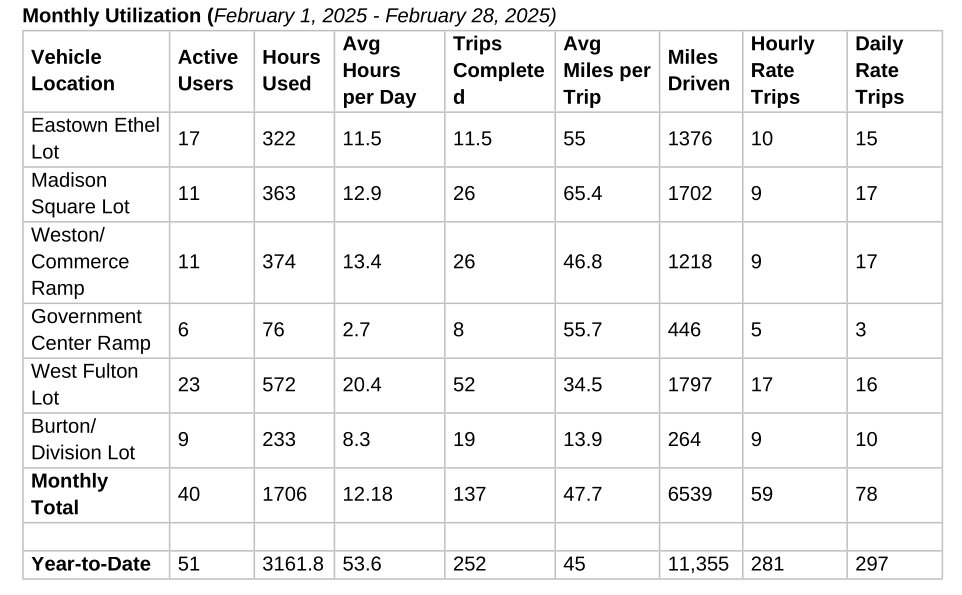 |
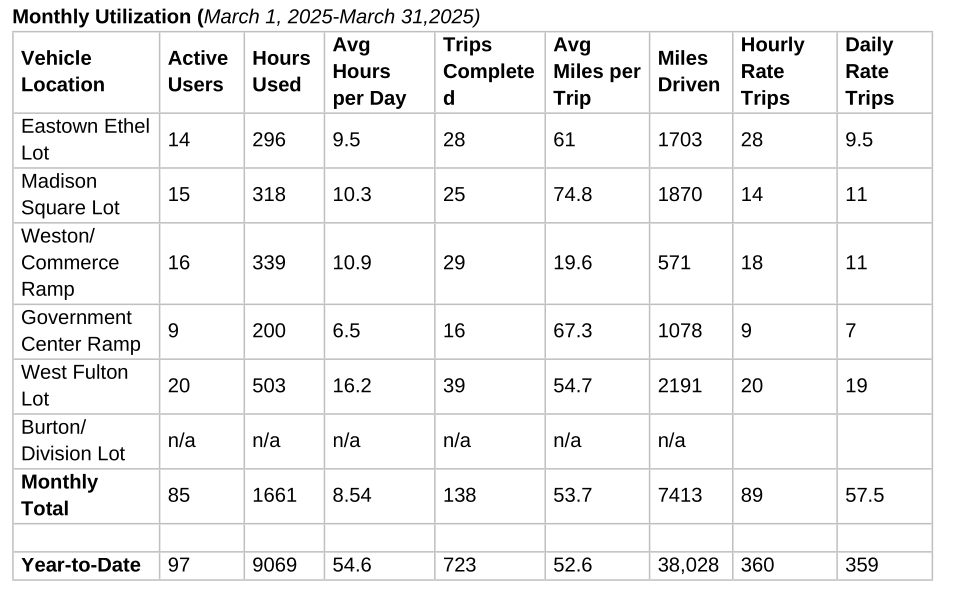 |
Due to receiving a $2,500,000 grant from the State of Michigan - not contingent on the collapsing federal government - the operator (MDO) is expected to expand in all the cities where it currently operates (Ann Arbor, Detroit, Kalamazoo, and Grand Rapids).
Parking
The average ownership cost of a new car, driven ~15,000 miles a year, is $12,297/yr or $1,024/mo.
Source: Nerdwallet.com, 2025-03-07 Owning and operating a motor vehicle is expensive! Imagine having this cost, on a single income, and raising a child. 😢
The new city budget makes a small inflationary adjustment to parking meter rates for the center city [aka: downtown], but does not increase the rates for neighborhood meters. A proposed increase of fees for odd-even parking violations was also removed . . . so the fee for organizing a neighborhood block party will increase, while the fine for storing a vehicle on public right-of-way such that it obstructs snow removal will not. From the conversation at the City Commission meetings it seems that many people find odd-even to be "confusing".
The April meeting of the MobileGR Commission had an interesting conversation resulting from an application to access a parking incentive program established in 1995. The stream of the meeting is available here [this conversation begins at 7:37]. Via this program a new business can get a 50% discount for six-months or a year on a five year parking lease. The conversation centered around the age of the incentive program, dating back to when MobileGR was "the Parking Commission"; it makes no accommodation to incentivize other forms of transportation. The conversation is worth listening to. This is the first application to the program in several years.
The Damn Roads!
Road Funding
The state, depending on the numbers you believe, has a significant maintenance budget related to roads. And it simply cannot stop itself from building more. Today the tragically bipartisan debate is which human services (Health, Education, ...) should be poached in order to care for the asphalt.
Meanwhile, all along, Grand Rapids has been fixing the roads. Thanks to the Vital Streets program approved by Grand Rapids voters in 2014 the streets of Grand Rapids have been steadily improved using an asset management strategy. The program is on-track to have 70% of streets in a good or fair condition by the conclusion of the program in 2030; currently the numbers stands at ~61%. When the program began it was projected that by 2019 the number of streets in good or fair condition would have been 13%.
As the state argues about how to "Fix the damn roads!", here is one simple question: what other cities, counties, and townships could levy a revenue stream to fix their own damn roads? The answer is simple: All of them.
The citizens of Grand Rapids have responsibly invested in our own home. How much should we pay for those who refuse to invest their own dollars in their own streets and roads?
In the context of the bi-partisan quest to "fix the damn roads" it is critical to understand how roads are funded in the state of Michigan. Do counties, townships, etc... receive road funding based on usage? Traffic counts? Some measure of criticality? No. Funding is distributed based on existing lane-miles. That's it. If some rural township wants more road dollars: they build more roads, then they get more money, .... and have more roads to maintain. A road connecting critical economic destinations - say a factory or an airport - that's the same as the road to a cul-du-sac of vacation homes. This is why, if the answer is to transfer more money, it will not fix the problem. The problem is the system; the state must adopt meaningful criteria, a fix-it-first policy, related to road funding or every additional $1 handed over to MDOT will be wasted. The incentives for local governments are all wrong. Informed and responsible state legislators should not be discussing dollars until they discuss process. More dollars with the current process will only produce more of the same results; and an even larger budgetary hole we will have to fill in the future.
Amtrak
The FRA (Federal Railroad Administration), which appears to still be operational, has released their Q1 performance reports for 2025. Q1 for the FRA means October 1st 2024 through 2024 year end, because of reasons. The on-time performance of the Pere Marquette (Grand Rapids / Chicago) service in this period improved to 86% from the 81% of Q4 2024. The Wolverine and Blue Water also showed increases, albeit up only slightly from their tragic and typical normal; they were up 69% from 67% and 74% from 72%, respectively.
The causes for service delays on the Pere Marquette are fairly evenly distributed between failures by Amtrak, the host railroads (CSX & Norfolk Southern), and miscellaneous reasons.
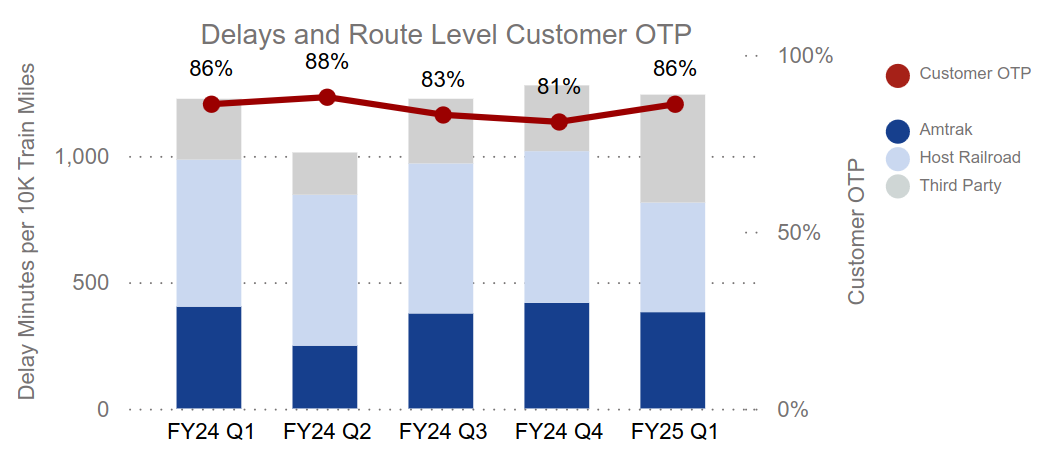 |
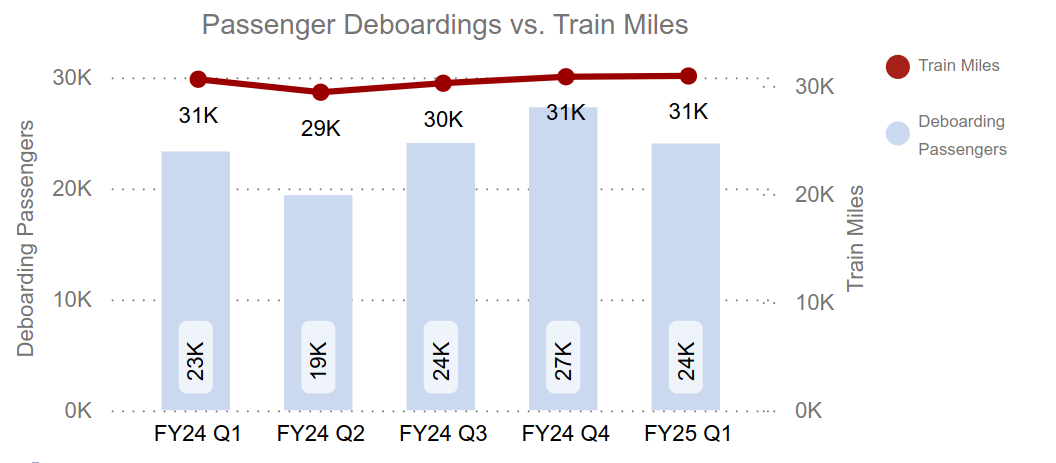 |
Ridership for this quarter was 23,823. Unfortunately at this time increasing ridership is effectively impossible as doing so would require either additional service or capacity. The utilization of the existing service is consistently high; we would need more available seats. Given the disposition and incompetence of both the state and federal regimes additional capacity is not on the table.
More Information
- The Rapid
- West Michigan Express, UrbanGR
- Ridership Recovery, UrbanGR 2024-12
- The Beginning Of The End (of The Rapid)?, UrbanGR 2023-12
- The Local Transit Senate, UrbanGR 2023-09
- Airport Access Study Documents, UrbanGR 2023-02
- Mobility Update, 2025-01, UrbanGR 2025-01
- Mobility Update: 2024-10, UrbanGR 2024-10
- Mobility Update, 2023-10, UrbanGR 2023-10
- Downtown group acquires property near riverfront to connect regional trail network, Crains 2025-05-02
- Grand Rapids parking fees would increase again under proposed city budget , Crains 2025-05-02
